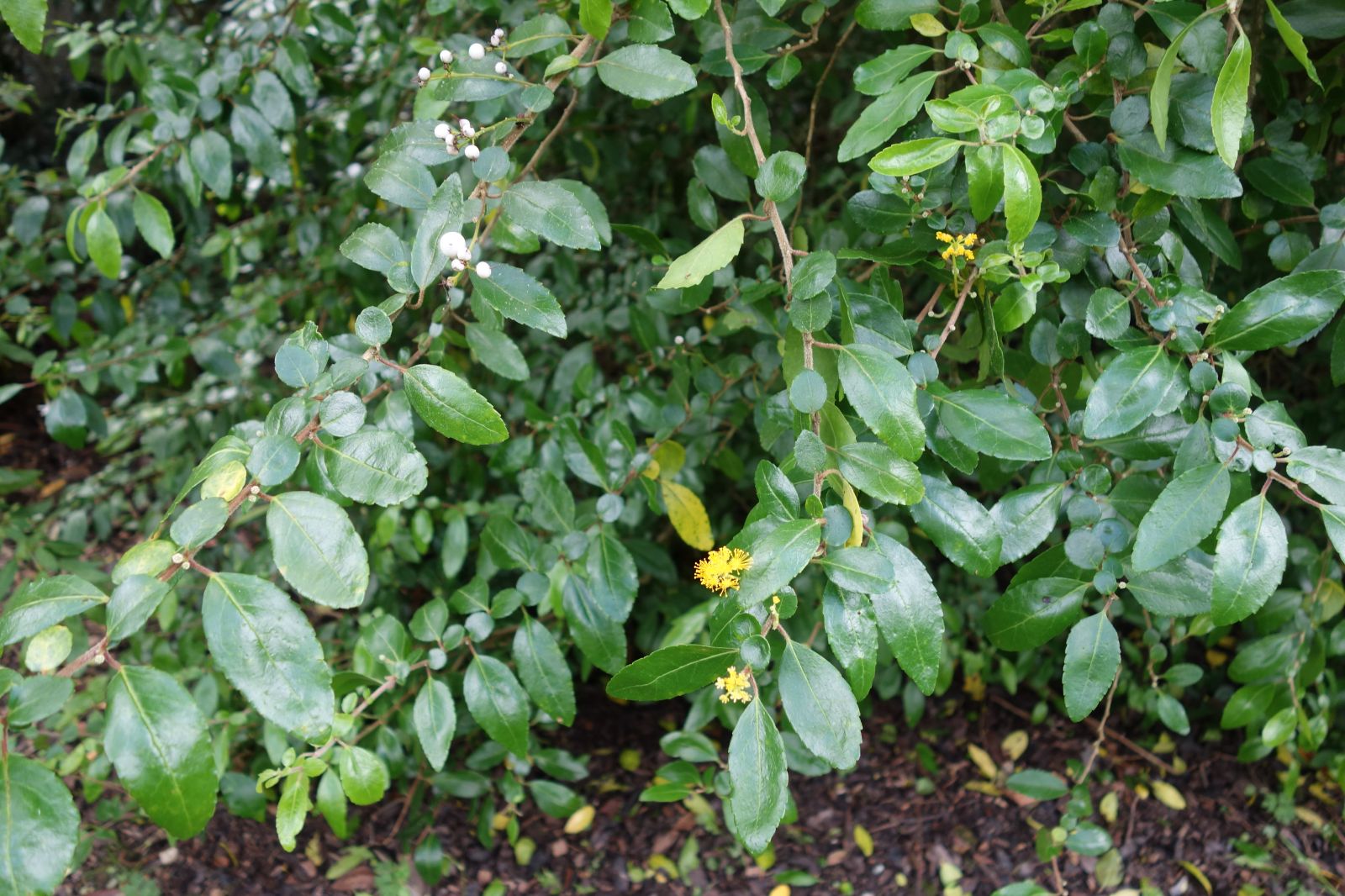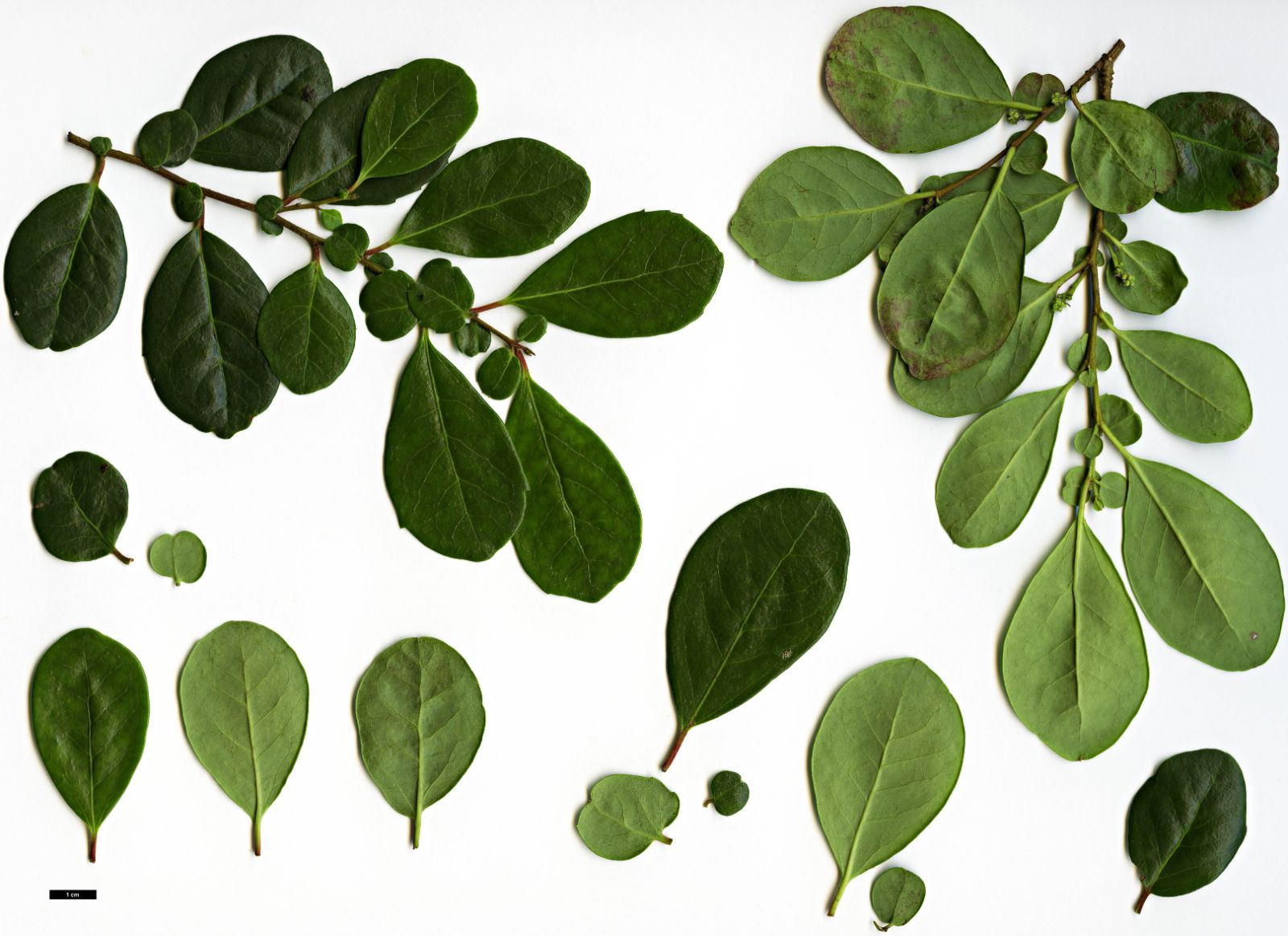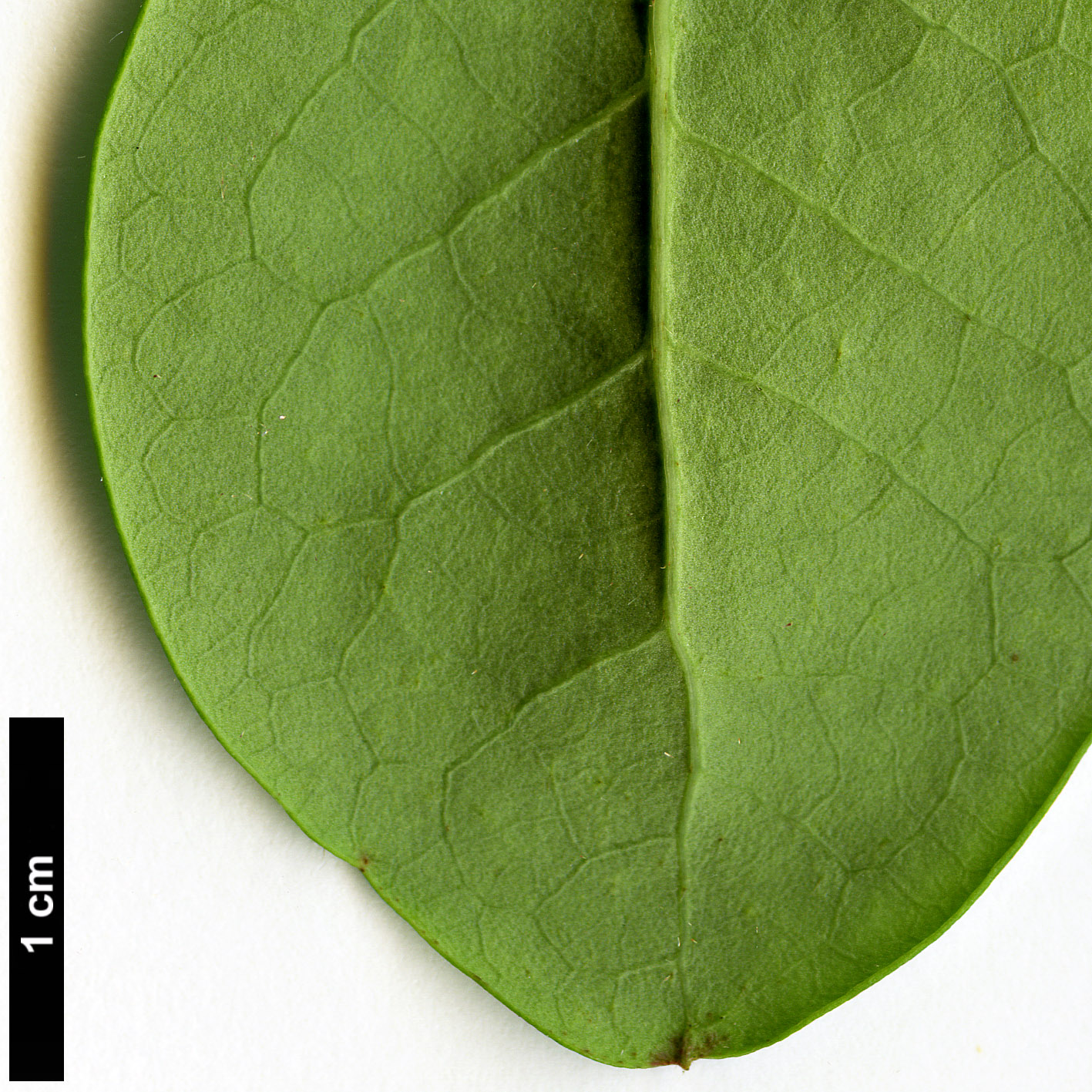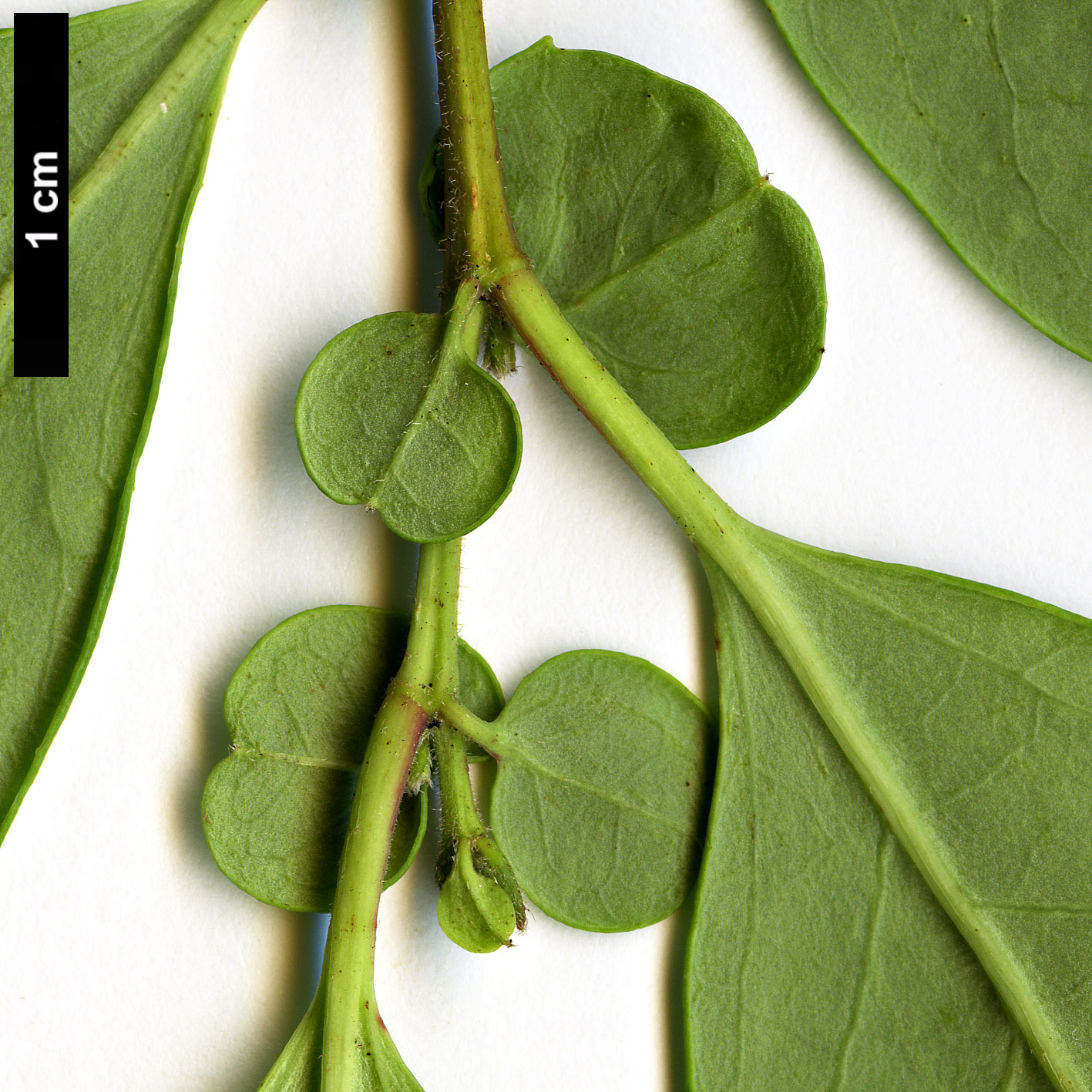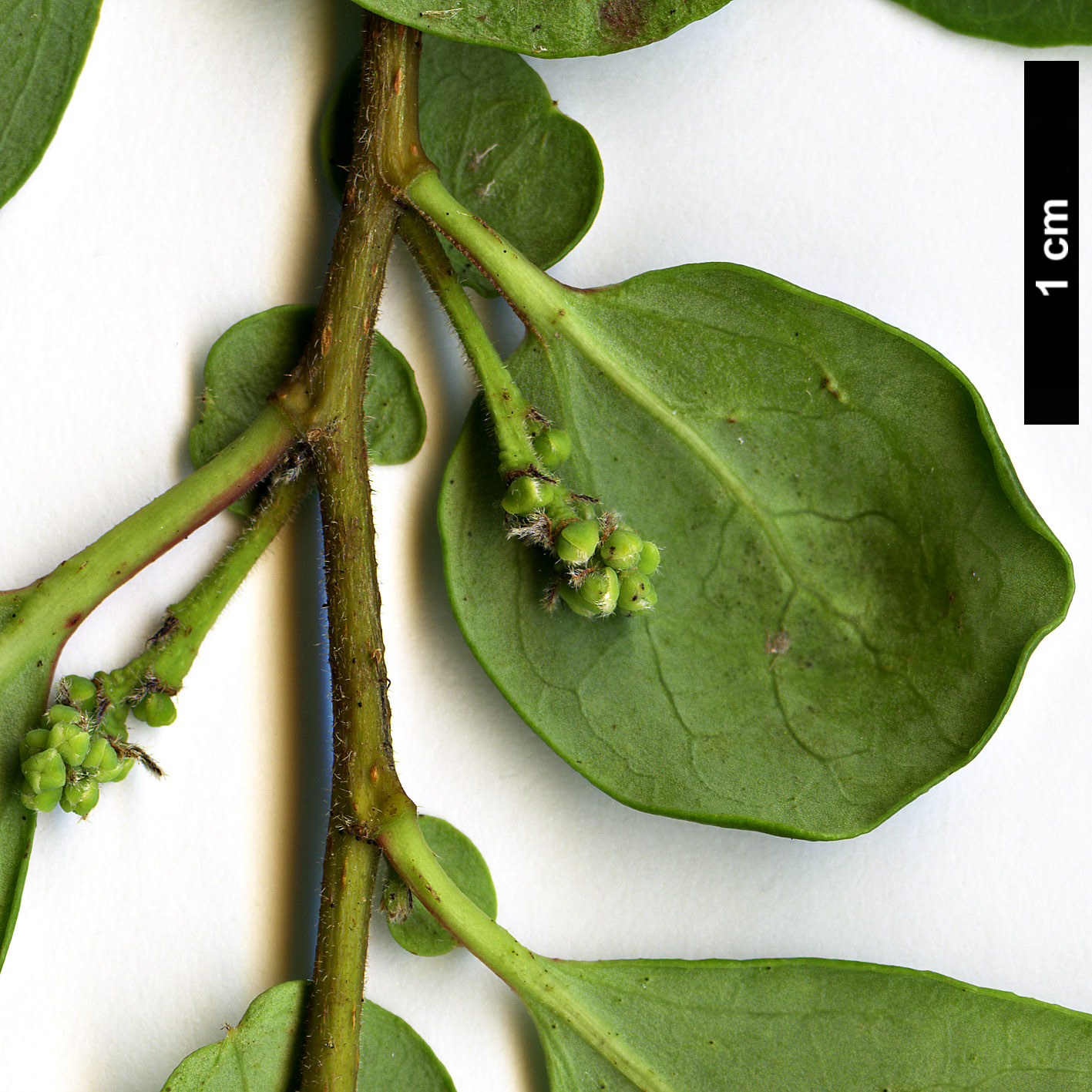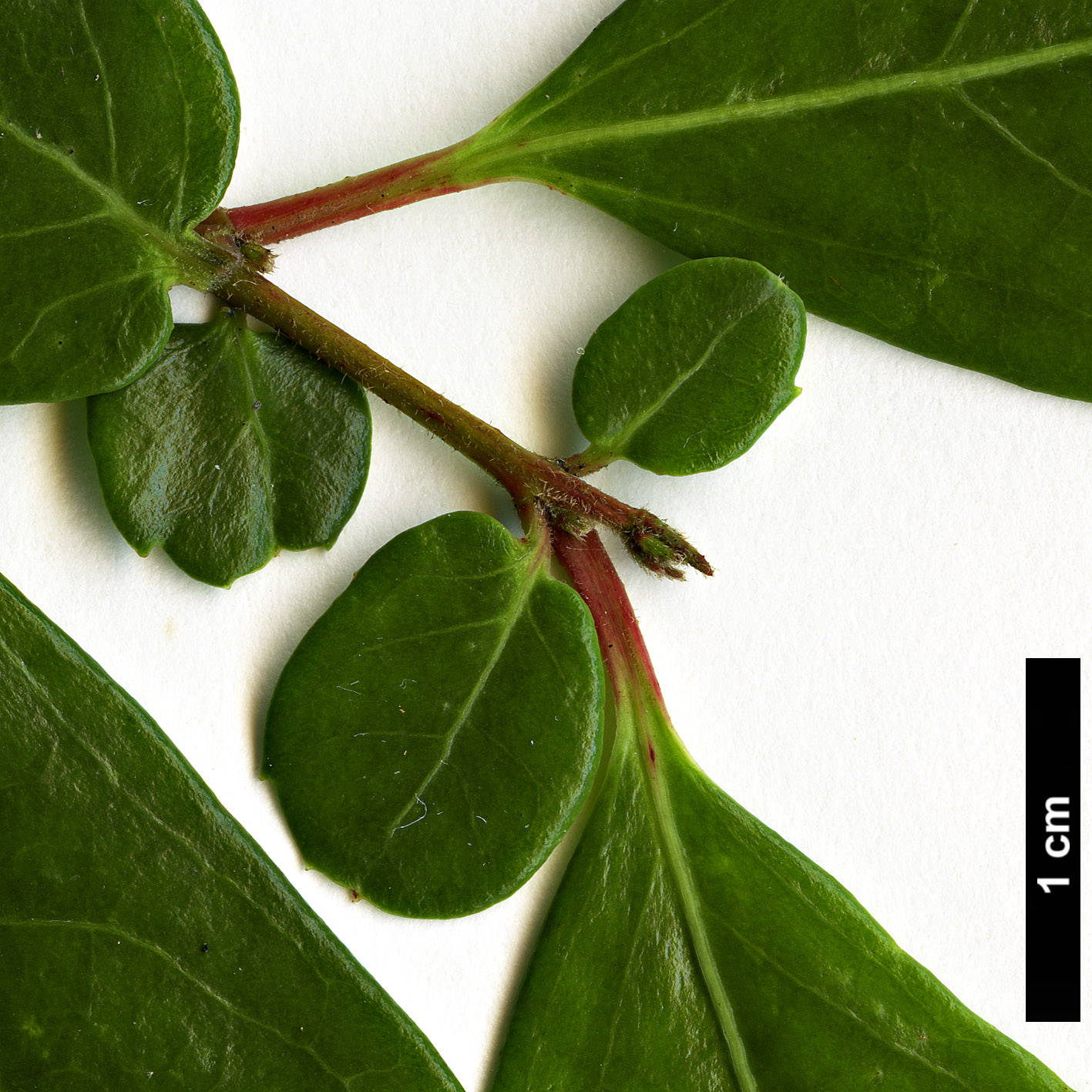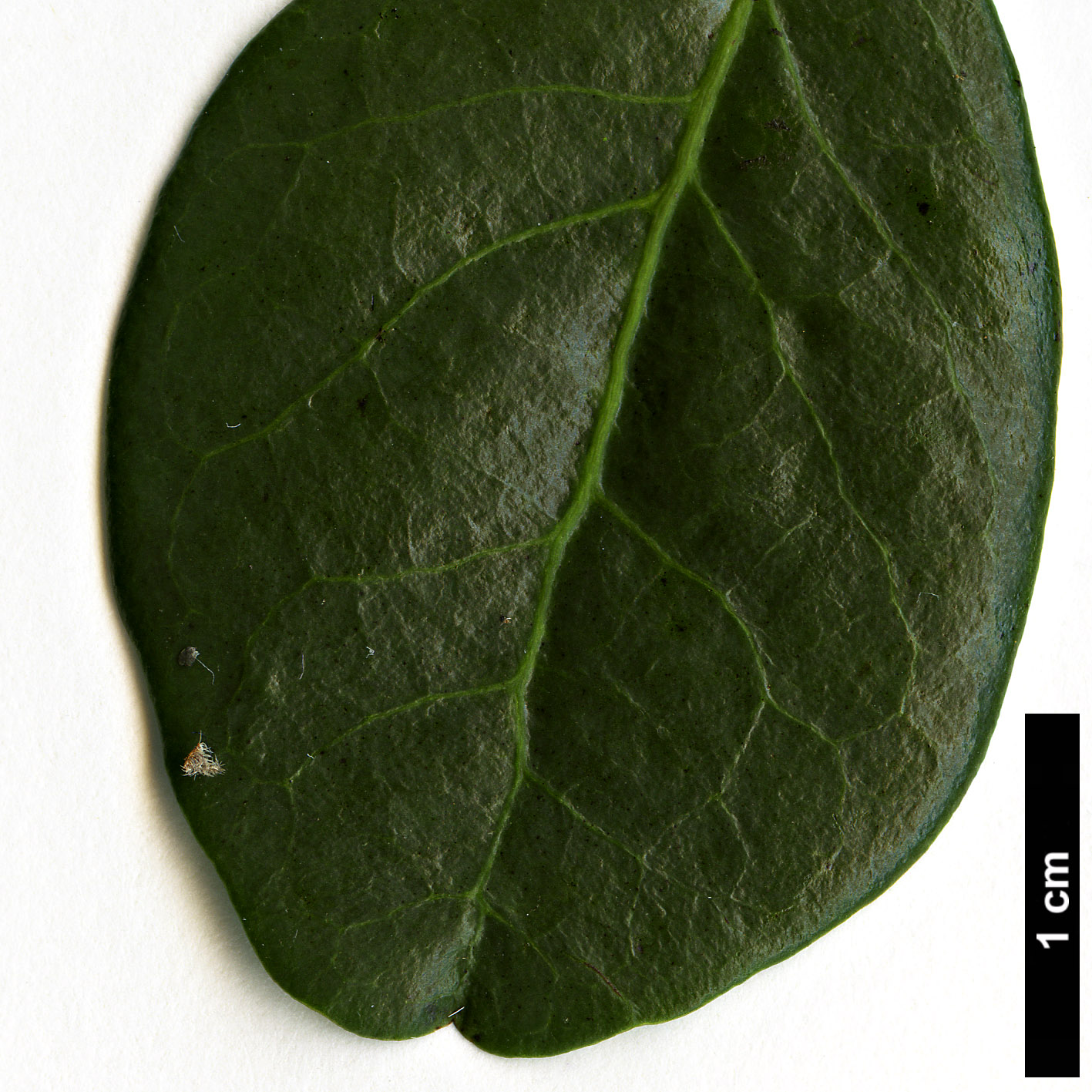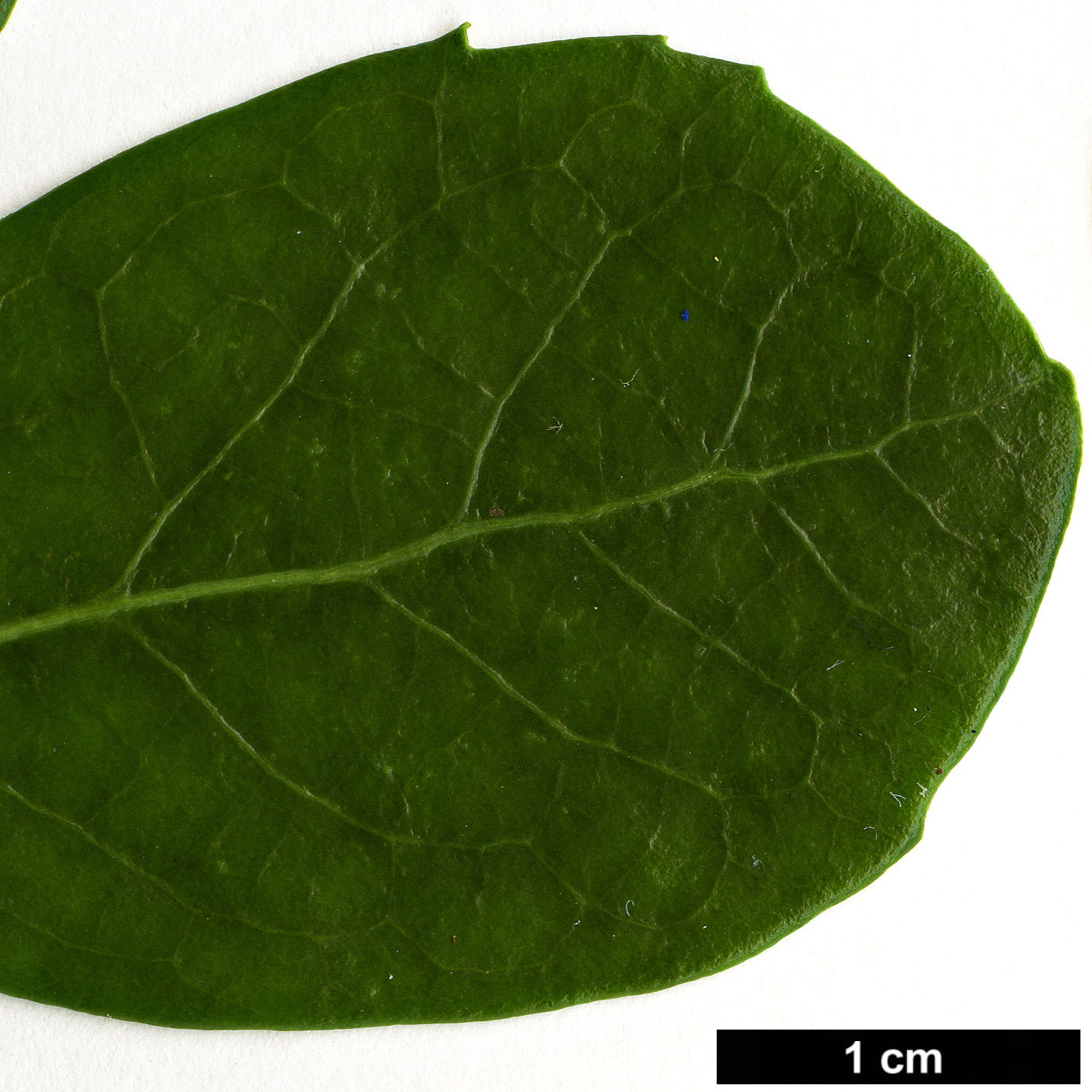Azara integrifolia
Credits
Article from Bean's Trees and Shrubs Hardy in the British Isles
Recommended citation
'Azara integrifolia' from the website Trees and Shrubs Online (treesandshrubsonline.
Genus
Infraspecifics
Other taxa in genus
An evergreen bush or small tree ultimately 20 to 40 ft high; young shoots very downy. Leaves leathery, in apparent pairs or threes at each joint; the true leaves obovate, oval or somewhat diamond-shaped, usually toothless, bluntish or pointed, margins recurved; 1 to 2 in. long, 1⁄2 to 1 in. wide; glossy green, glabrous on both surfaces, veins raised on the under-surface; stalk 1⁄8 in. long, downy. The smaller ‘leaves’ (which are really leaf-like stipules) are rounder, 1⁄4 to 5⁄8 in. long, very shortly stalked. Flowers fragrant, produced from January to March in the leaf-axils of the previous summer’s shoots in shortly stalked, compact clusters 2⁄5 to 1⁄2 in. wide. The flower has no petals. Sepals four, 1⁄12 in. long, oblong, dark purplish outside, woolly inside; stamens 1⁄8 to 1⁄5 in. long, numerous, rich yellow with very dark anthers. Leaves on young plants are often slightly toothed. Berries globose, 1⁄4 in. wide, white stained with pale mauve. Bot. Mag., t. 9620.
Native of Chile and neighbouring parts of Argentina; introduced in 1832 and again by Comber in 1925. From other species this is well distinguished by its leaves being normally without teeth. The flowers are abundant, and their fragrance is pleasing, though not strong. The ultimate height attained in the wild is given by Reiche as 10 ft and by Comber as 15 ft, but at Rostrevor, Co. Down, there was a specimen 32 ft high in 1930. Comber’s form received an Award of Merit when shown from Nymans in 1934; the original plant no longer exists there, but a small replacement came through the winter of 1962–3 unharmed.
var. browneae (Phil.) Reiche
Synonyms
A. browneae Phil

